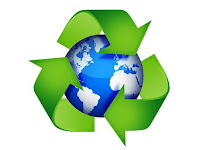Photo: livingstingy.blogspot.com
We would like to thank you all for participating in the Office of Sustainability’s annual transportation survey. Once again we had a huge response rate with over 330 respondents. Congratulations to Dan Sloan, winner of 4 movie tickets, and Ainslie Ellis, winner of a $20 gift card to the Colgate Bookstore.
Faculty and staff commuter emissions make up roughly 10 percent of our campus carbon footprint. Carpooling, walking, biking, and telecommuting are a few options that can reduce emissions while helping us achieve our goal of carbon neutrality by 2019.
If you are interested in carpooling we encourage you to sign up for Purpool (www.purpool.com), a ride share program for the Colgate community. Carpooling will save you gas money, reduce wear and tear on your vehicle, lower maintenance costs, and allow you to better connect with your colleagues. However, we understand that schedules do not always match up. So, what then?
Switching to fuel-efficient vehicles can also save you money while reducing emissions. Electric cars, for example, have come a long way in the past few years and have finally started to make their way onto the Colgate campus. Clara and David Lantz[1] and Catherine Cardelús and James “Eddie” Watkins[2] have recently become the proud drivers of a Chevy Volt and Prius V Plug-In respectively.
The Lantz family has had their Volt since April 2012 and are really enjoying it. The Volt has an advertised battery range of 38 miles per gallon gasoline equivalent (mpge) on a full charge and then seamlessly switches to a gas engine. The Volt is meant to be a high performance electric car and can reach 100mph when running on electric power alone. The car takes about 10 hours to charge and costs the family about $18 a month in electricity to run. The Lantz family primarily uses their Volt for short trips around town and because of this they still have the original tank of gas in their car. Incredible! However, they have discovered the fine print about the battery life. The advertised 38mpge is an average of what customers experience. The actual range of the battery is 25-55mpge and varies based on terrain, outside temperature, and driver technique. The Lantz family was getting about 46 mpge in the summer, but that number has drastically dropped to about 27mpge in the cooler fall months.
The Cardelús -Watkins family traded in their Jeep for a Prius V plug-in about a month ago and their only regret is not doing it sooner. The Prius has a 12 mile range on battery power alone and then switches to hybrid mode, allowing the driver to get around 100mpge and 50 miles to the gallon in hybrid mode. The Prius battery takes about 3 hours to charge and can be timed so it only charges during off peak hours, which means cheaper electric prices. The Cardelús-Watkins family has only spent about $65 fueling their Prius for one month of both short and longer range driving.
These cars also have other innovative features. The Prius and Volt can both sense where the key is. As long as you have it on your person you can push a button to start ignition and lock or unlock the doors of the Prius with a wave of your hand. Both cars are incredibly quiet and feature LCD screen displays and integrated technology meaning you can talk on your phone or play MP3s directly through the car. Clara Lantz described the Volt as being “like you’re driving a computer, but it isn’t complicated at all and still feels and drives like a gas-engine car.” The 2013 Volt will allow drivers the option of manually shifting from gas to electric so they can save battery life for a city destination. The Prius also helps you alter your driving habits to be as efficient as possible by showing you what your current MPG is and can even display your fuel efficiency history in a graph for all the data lovers out there. Other incentives include preferred parking at places like Trudy Fitness Center and Price Chopper and tax credits.
When buying an electric car it is important to do your research and select the car that is right for you. Other models to consider are the Nissan Leaf, the Ford C-Max Energi, and the luxury BMW I-8.
The Sustainability Office will continue to highlight individuals on campus who are advancing sustainability in their own way. If you know of someone who is putting sustainability into practice, please let us know (sustainability@colgate.edu)!
[1] Clara is an administrative assistant at the Chapel House and David is a professor of mathematics.
[2] Catherine and Eddie are both assistant professors of biology.














